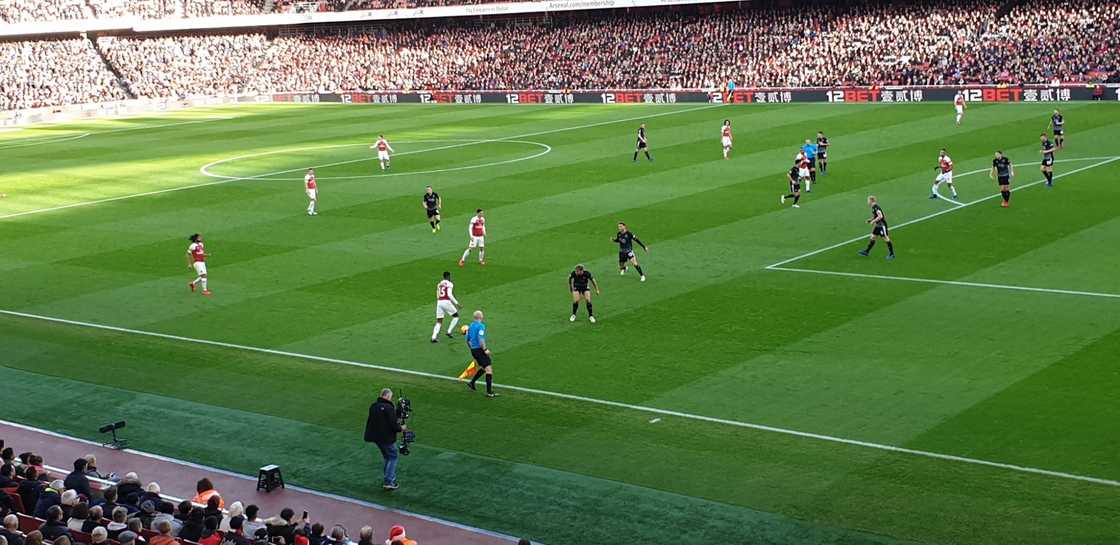How Technology Is Changing Arab Football Decisions
VAR in Arab Football: How It Works and What Fans Think
In Arab football, everything is changing with the emergence of VAR football technology. What moments used to spark outbursts, the chaos and confusion now stand still under a glass, a lens, in this case. Saudi Arabia was the first Arab nation to implement professional VAR in 2018. Afterward, the rest of the Arab countries, Egypt, Morocco, Qatar, and the UAE, followed suit and integrated the system into their premier divisions. It has become standard practice in all major Arab competitions. Every disputed call is captured on camera, every controversial goal is scored, and every game-defining moment is filmed—there is always a camera set up. However, not everyone has received these changes positively.
Implementation Timeline
The video refereeing system, or VAR, did not materialize out of thin air. Like every new technology, it entered gradually, starting from the top leagues where it was tested during critical matches and progressively trickling down to the lower divisions. Saudi Arabia was the first to fully embrace it in 2018 by utilizing it in all Pro League matches. These modifications ensured that every decision was clarified to fans watching the game live or tracking through score updates via the تحميل برنامج مراهنات. Qatar followed suit in 2019 as it prepared for the World Cup. By 2020, Egypt had also fully embraced the use of VAR in the Premier League. Tunisia and Morocco were more reserved, implementing it in cup finals before wider use.
Broadcasting these matches internationally truly accelerated this process. When the FIFA World Cup was held in Qatar in 2022, Arab leagues could no longer afford to operate on outdated systems. Referee training became intensive, with some even going abroad to train. Now, VAR is ubiquitous, even in local derby matches or contested mid-season matchups.

Source: UGC
What VAR Checks
VAR is not monitoring everything at once. Each component of a match has a set, defined role that needs to be accomplished. VAR won't interrupt for every minor infraction; it only intervenes when an error of critical magnitude in a system would warrant intervention.
Here's what VAR pays attention to:
● Goals: Offside or any foul in the preamble movement to the goal? VAR will assess the entire sequence preceding the action.
● Penalties: An apparent disparity between the action and the awarded penalty will be checked.
● Mistaken Identity: If a player is wrongfully issued a red or yellow card, VAR takes care of it.
This rationale does not equate refereeing to automaton devices. It seeks fairness and rectitude in deciding factors within the match. Each scrutiny aims to provide an imbalance in the game and offer an inside look. Authority still lies on the shoulders of the officials, and VAR only nudges them.
Equipment and Crew Setup
Making VAR function in Arab football is more than having cameras. Each stadium must meet international standards with fiber optics, control rooms, and replay screens. That does not include the visible cameras throughout the stadium that need to be installed for even basic functionality of VAR systems. Qatar's stadiums built for the 2022 World Cup had over 40 cameras each. Egyptian and older Moroccan stadiums were remodeled from the inside to have the basic wiring necessary for the system to function. Beyond the physical components, there is a significant technological aspect. Reflex-driven, synced real-time interactions between software operators, referees, and technicians are the backbone of every decision.
Camera and Tech
Surveillance of the pitch involves cameras that track the ball from every angle and ultra-slow-mo capture at over 50 frames per second. In Qatar's World Cup stadiums, AI offside technology was also implemented. Using offside limb sensors, automated flags are raised in under 25 seconds, faster than any human.
Technology, however, varies from region to region. Fewer cameras in Egypt mean tighter shot framing. In Saudi Arabia, heat-shielded cameras had to be fitted because sensitive technology would melt in the desert. Even lighting is essential because poor illumination can obscure critical offside lines. Seconds are precious, and pixels are paramount.

Source: UGC
Decision Booth Team
Every step of the VAR process has a team that works together like a well-oiled machine. They are situated in soundproof control rooms, donned in headsets, and watching screens as big as walls. The entire match may pivot from the slightest mistake in one frame.
This is who comprises the VAR crew:
● VAR (Video Assistant Referee): He is the primary analyst and contacts the on-field referee for flagged issues.
● AVAR (Assistant VAR): Monitors other activities and helps mitigate blind spots for unpunished fouls.
● Replay Operator: Edits video by cutting, zooming, and fast-rewinding to get the best angle within arbitrary deadlines.
● Tech Supervisor: During reviews, the tech supervisor monitors the communication lines of the cameras, data, and screens for dead audio and video feeds.
Their training lasts for months.
On-Field Referee Interaction
Even though VAR exists, the referee remains in charge, as they can only make essential decisions. Support decisions can be made in the background by VAR, but they cannot change the decisions made by the referee. This is the way communication is executed in the pitch:
Steps | What Happens |
VAR Alerts | Booth contacts the referee via headset about a possible error. |
Review Decision | The referee decides to review or continue based on VAR advice. |
On-Field Screen Check | The referee watches replay footage on a side-pitch monitor. |
Final Call | The ref makes the decision and signals it clearly—play continues or changes. |
These four stages are fast. But they have transformed objectives into drama and bookings into stories.
Controversial Moments
Arab football has faced its VAR tempests. During the 2022 Saudi Pro League, Al-Ittihad faced Al-Nassr amidst an uproar due to a disallowed goal that appeared legitimate from multiple angles. There were Twitter rants by not just the fans, but also the players. Falsifying a decision in the last minutes of a Zamalek game resulted in stampedes outside the stadium. Participants in the spectacle were all shown the duplicate footage. However, belief evaporated in mere moments.
Much of the conflict stems from the delay. A three-minute pause completely disrupts the flow, and one poor call decimates confidence. Morocco's Botola Pro League attempted to solve the issue by increasing the number of uninterrupted playback periods; however, it faced backlash for missing critical moments. Football is not simplified by technology; automation complicates it. Screens don't mute mixed signals; they amplify them. Delay for even a split second during live betting shifts odds drastically.
Fan Reactions
For numerous fans, VAR seems lifeless and distant. Breaks per chant. Goal scoring anticipation. Silence as goals are scored. In the Gulf, some supporters now humorously assert, "Hold off on celebrating until VAR gives the green light." That waiting period has impacted the atmosphere inside stadiums.
But it's not all bleak. In the UAE and Qatar, fans surveyed after games expressed feeling "more secure" knowing justice could be served. Younger gamblers, in particular, have more faith in VAR than in human referees. It's about equity. Yes, errors still occur—but not as often as before. The actual annoyance? The unwavering conviction in the wrong decision replayed long after the incident was resolved.
Impact on Game Flow
While adding breaks increases stress, VAR also introduces a new level of precision. Control resolves accuracy, but the competition legs slow down. For gamblers, pauses present live betting opportunities. Some view these pauses as interruptions. While some argue football loses its essence, many believe it has simply undergone rewiring.
[Sponsored]
Source: Legit.ng


